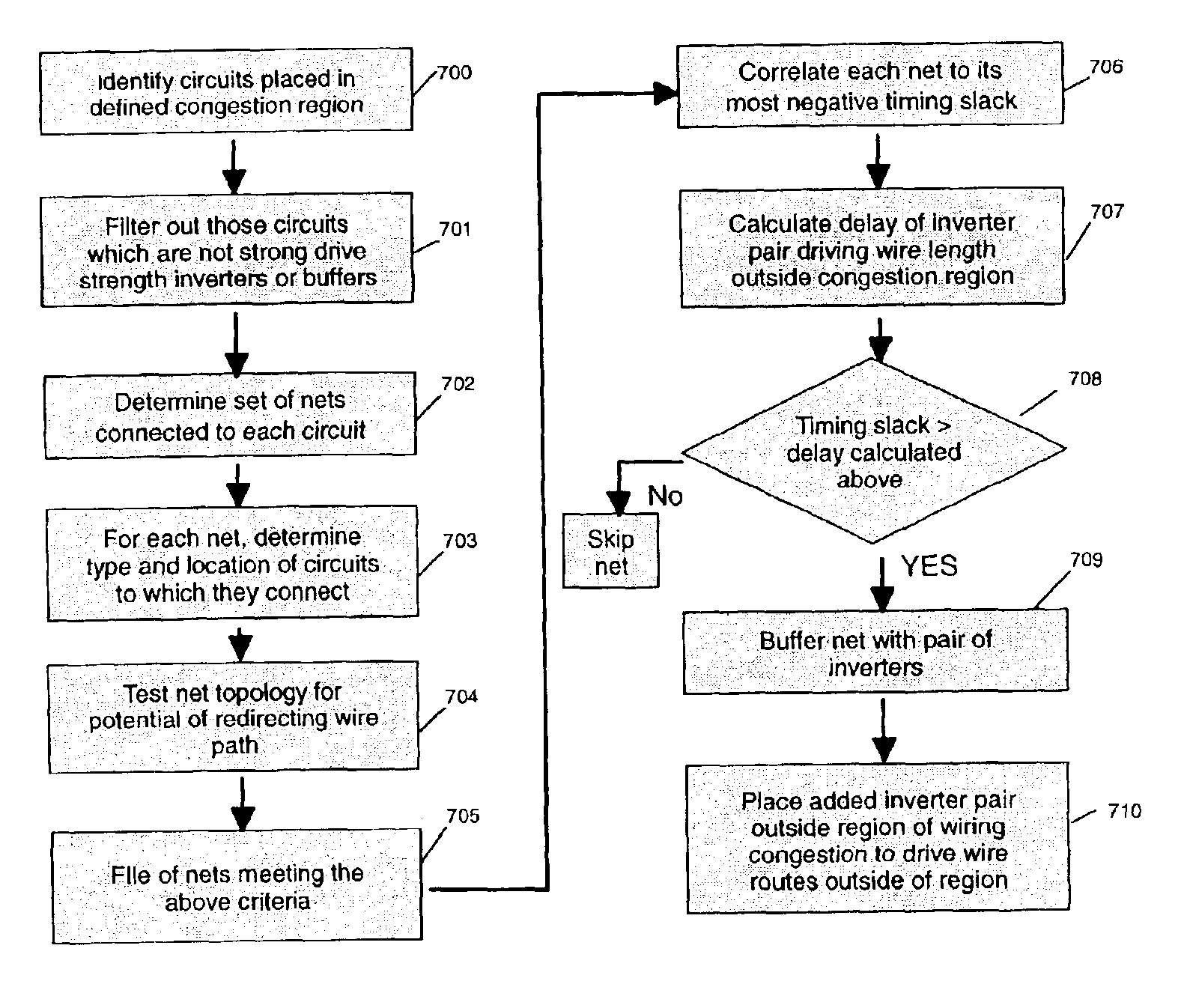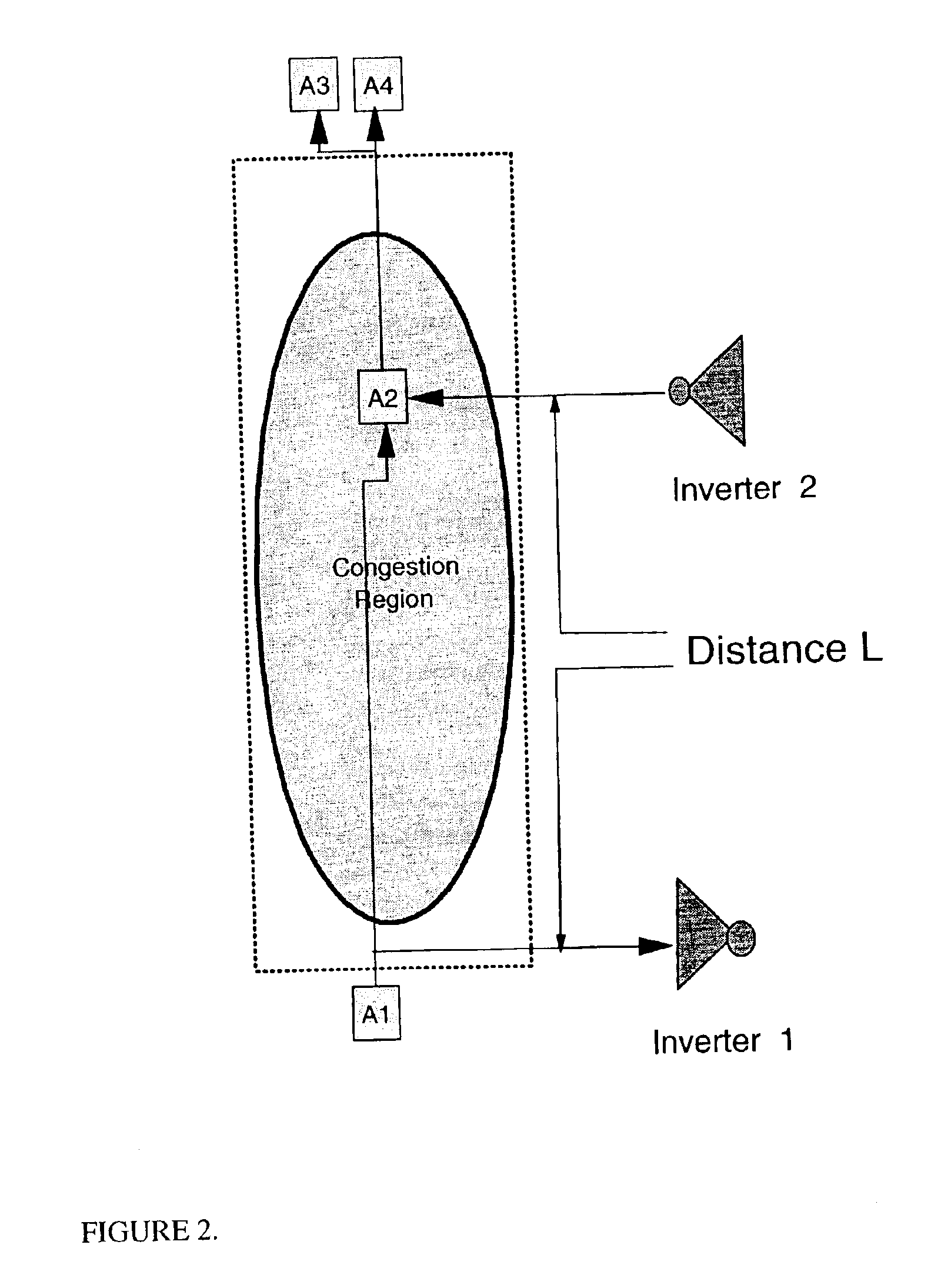Method for identification and removal of non-timing critical wire routes from congestion region
a critical wire route and non-timing technology, applied in the physical design process of designing vlsi semiconductor chips, can solve problems such as increased wire load, non-steiner wire lengths and possibly unwireable nets, and cost of timing
- Summary
- Abstract
- Description
- Claims
- Application Information
AI Technical Summary
Benefits of technology
Problems solved by technology
Method used
Image
Examples
Embodiment Construction
[0021]A region of wiring congestion is defined, typically by review of wiring congestion maps in conjunction with the identification of non-steiner wiring routes. FIG. 4 is a flow diagram highliting the process steps. At step 700, a placement box is defined that encompasses the wiring congestion region and extends marginally beyond it on either side in the direction of the most severe wiring congestion (X vs. Y). This is depicted in FIG. 1 by the dashed line marked Placement Box and the red oval labeled Congestion Region. The placement box is extended slightly beyond the region of wiring congestion in the Y direction, the assumption in this example being that the direction of the most severe wiring congestion is in the Y direction. A program is then used to report all circuits placed within the placement box boundary. At step 701, these circuits are compared against a set of defined inverter and buffer circuit types of high drive strength. Those circuits not part of the set are filt...
PUM
 Login to View More
Login to View More Abstract
Description
Claims
Application Information
 Login to View More
Login to View More - R&D
- Intellectual Property
- Life Sciences
- Materials
- Tech Scout
- Unparalleled Data Quality
- Higher Quality Content
- 60% Fewer Hallucinations
Browse by: Latest US Patents, China's latest patents, Technical Efficacy Thesaurus, Application Domain, Technology Topic, Popular Technical Reports.
© 2025 PatSnap. All rights reserved.Legal|Privacy policy|Modern Slavery Act Transparency Statement|Sitemap|About US| Contact US: help@patsnap.com



